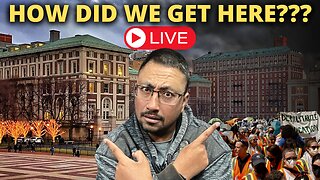How Central Banks Control the Money Supply With Interest Rates
Many people think that the central bank primarily controls the money supply (M1, M2, M3). That used to be true. However, since the bulk of money creation is done by private banks, the central bank mainly controls their money creation by setting the short term interest rate (rbi policy rate, rbi repo rate, ecb deposit rate, fed funds rate, Bank of England base rate) on bank loans and on central bank reserves. This video builds on knowledge of how private banks create money.
In most cases, monetary policy boils down to the following. Central bank set the interest rate on which all other rates are based. By doing so they try to control the amount of money circulating in the economy indirectly by making it more or less attractive for commercial banks to lend. Most central bankers change the interest rate as they try to control inflation. They will increase the interest if they believe the economy is overheating. This will lower inflation. They decrease the interest rate to spur the economy to grow faster which will lead to increased inflation.
Monetary policy via interest rates is part of the monetary policy toolkit of central banks. In addition to that central banks can engage in money printing, monetary finance, and quantitative easing. I have separate videos on each of these topics.
Narrated and produced by Dr. Joeri Schasfoort (University of Cape Town)
-
 1:43:16
1:43:16
John Burk
2 hours agoAntisemitism bill, Biden in league with big tech on covid, and Al Sharpton returns.
1.43K4 -
 LIVE
LIVE
James Kaddis
11 hours agoThe World Just Changed Overnight! Did You Notice?
1,090 watching -
 38:35
38:35
Standpoint with Gabe Groisman
2 hours agoEp. 22. Knesset Speaker on The Challenging Times in Israel. Amir Ohana
7.65K13 -
 17:05
17:05
TENET Media
1 hour agoRepeal The 19th Amendment? | Tim Pool
4.1K17 -
 2:42:14
2:42:14
Russell Brand
5 hours agoPower-Grabbing WHO Pandemic Treaty Is BACK - And It’s Worse Than You Thought- Stay Free #357
128K323 -
 27:50
27:50
Stephen Gardner
2 hours ago🔴Biden makes EPIC MISTAKE Against Trump as TRUTH Leaks out of Court!
10.7K24 -
 4:18:06
4:18:06
Cryptic Hybrid
5 hours agoBreeding Cute Bees & Helping Gnomes. Let's Play Indie Games Time Is Honey & EcoGnomix
12.6K -
 1:26:00
1:26:00
vivafrei
2 hours agoTrump Judge Contemplates MORE Contempt! TERRIBLE Bill out of New York; Daily Wire DRAMA & More!
26.1K21 -
 1:11:49
1:11:49
TheAlecLaceShow
3 hours agoGuests: Senator Rick Scott | Congressman Andrew Clyde | Clay Clark | The Alec Lace Show
12.3K1 -
 57:31
57:31
The Dan Bongino Show
5 hours agoThe Professionals Behind The Protests (Ep. 2242) - 05/02/2024
410K1.28K